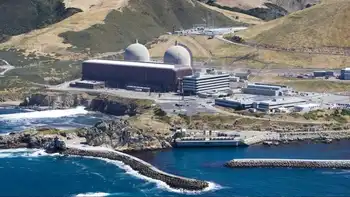New York to refit older buildings to save energy
By New York Times
Protective Relay Training - Basic
Our customized live online or in‑person group training can be delivered to your staff at your location.

- Live Online
- 12 hours Instructor-led
- Group Training Available
Planners asserted that the package, drafted by the offices of Mayor Michael R. Bloomberg and the City Council speaker, Christine C. Quinn, would result in $2.9 billion in private investment in building improvements by 2022 and generate 2,000 new jobs in energy auditing and related fields as well as thousands of temporary construction jobs.
City officials estimated that it would save property owners roughly $750 million a year in energy costs, city officials said. The program would begin in 2013, with 2,200 buildings performing audits and beginning upgrades each year for a decade.
To limit political hurdles, improvements to a building would be mandatory only if the energy audits showed that the costs of the improvements could be recouped through declines in energy bills within five years.
Mayor Bloomberg will roll out the proposal, as Earth Day celebrations unfold across the city and the nation.
Yet despite the green gloss, there are signs that he and his allies on the City Council could face significant opposition to the plan from property owners.
Groups representing building owners and managers have already told the mayorÂ’s office that they strongly oppose some of the proposed steps.
Seattle is also introducing a plan to encourage energy thrift in buildings, but it does not include mandatory upgrades.
The moves are part of a nationwide push — from Berkeley, Calif., to Austin, Tex. — to cut back energy waste and consider the impact that emissions from buildings have on the climate. By many estimates, the heating, cooling and electrifying of buildings accounts for more than one-third of the country’s emissions of carbon dioxide, the main greenhouse gas linked by scientists to global warming.
The focus on older buildings is particularly important in New York, where buildings account for 80 percent of the cityÂ’s carbon-dioxide emissions and their energy costs are about $15 billion a year, said Rohit Aggarwala, the director of the cityÂ’s Office of Long-Term Planning and Sustainability. New construction with tighter energy standards will ensure greater efficiency, but most of todayÂ’s older structures will be around for decades to come, he added.
“Existing buildings are in fact the nut that must be cracked if we are ever going to make a dent on the demand side in terms of energy,” Mr. Aggarwala said.
The efforts in New York and Seattle will be aided in part by a portion of the $2.8 billion in energy efficiency and conservation block grants included in the federal stimulus package, officials in both cities said.
New York City plans to use $16 million in stimulus money to prime a revolving-loan fund that will help property owners pay for energy improvements.
Seattle will use $1.2 million from a stimulus grant to provide loans for energy-efficient upgrades to buildings there, Seattle officials said.
Told of the cities’ plans, Van Jones, the new White House special adviser on green jobs, said the country was finally moving to harvest the “low-hanging fruit” of building efficiency.
“Getting buildings to waste less energy results in job creation and cutting carbon pollution,” Mr. Jones said. “Money that was literally going out the window can be reinvested in businesses, in consumer purchases or savings.”
The New York requirements for buildings, if approved, would in theory reduce the cityÂ’s total carbon-dioxide emissions by 2022 by around 3 million tons a year. That is equivalent to 5 percent of the cityÂ’s total emissions of 63 million tons in 2005, officials said. The planned reduction in emissions from building improvements equals all such emissions now from the city of Oakland, Calif., Mr. Aggarwala said.
Among four related bills to be introduced, one would create the cityÂ’s first energy code, requiring for the first time that upgrades to equipment in all of the cityÂ’s one million structures meet the latest standards for energy efficiency. The existing state energy code allows many renovations to take place without a switch to the latest, most efficient components.
Most of the planÂ’s other elements apply only to the cityÂ’s larger buildings. All 22,000 buildings in the city with more than 50,000 square feet of floor space would have to conduct energy audits every 10 years, according to city officials. (City-owned buildings of 10,000 square feet or more, and most schools, would be audited and upgraded as well.)
Owners of larger buildings would have to participate in an online “benchmarking” program of the Environmental Protection Agency that creates a profile of a building’s overall energy efficiency. The results would be made public along with the property’s tax-assessment information.
Any improvements in windows, insulation or other building components that would pay off in saved energy costs over five years would be mandatory, according to the plan.
Officials from the New York chapter of the Building Owners and Managers Association said they supported the energy code, lighting improvements and steps requiring energy “benchmarking.” But they said they strongly opposed the biggest component of the plan: the required energy audits and mandatory upgrades.
In a recent letter to the mayorÂ’s office, Angelo J. Grima, the president of the New York chapter, said the plan to have upgrades determined by outside energy auditors could lead to inflated prices and the wrong solutions.
“We believe that the building prioritization of retrofitting is best left in the hands of the building owner/manager, not outside consultants who seek to bundle projects and lead to higher costs for our members,” his letter said.
But Ms. Quinn, the City Council speaker, said that opponents would have a hard time marshaling an effective argument against the measures, given the multiple benefits.
“There’s always somebody against something,” she said. “But I do think this package is comprehensive thoughtful and fair and sends a message that making buildings and real estate green is not something that stands in the way of business owners and others’ making money.”











